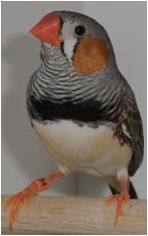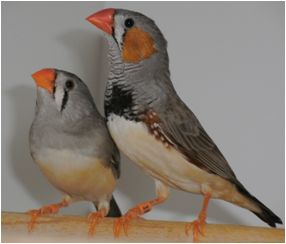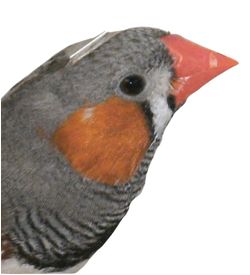Einführung
Sexual selection is one of the most important and most fascinating driving forces in evolution and a main research area in behavioural eology. It acts as selection of one sex through the other sex. Thus, sexual selection supports the evolution of traits which enhance the reproductive success of an individual through his or her mate choice. In most species, females are the choosy sex because females often invest more energy, time and other important resources to raise their young than males do (Krebs & Davies 1996, Trivers 1972). The mating preferences of females are therefore the driving force for the evolution of extravagant traits in males.
In addition to ecological factors (Endler & Basolo 1998) and maternal effects (Moussau & Fox 1998), the social environment has an eminent influence on female mate choice (Freeberg u. a. 1999). The social environment provides opportunities for interactions between and observations of conspecifics and therefore creates prerequisites for social learning (Heyes 1994). Social learning can also play an important role in the context of mate choice. Individuals living in groups can use public information (Danchin u. a. 2004, Dall u. a. 2005) about potential mates by observing conspecifics during mate choice.
Mate-choice copying is an important form of social learning in an intersexual context (Westneat u. a. 2000, Witte 2006). Females copy the mate choice of other females by observing a sexual interaction between a female and a male, and afterwards copulate with the same male as the observed female did before. Thus, females do not choose their partner exclusively independent of other females as theoretical models of sexual interaction suggest, but they can be influenced by the mate choice of other females.
Does mate-choice copying support the evolution of new male traits in the zebra finch?
With her studies, Nina Kniel wants to discover whether mate-choice copying supports the distribution and maintainance of new male traits in the zebra finch. Additionally, she wants to find out under which circumstances female zebra finches will copy the mate choice of their conspecifics. Hence, Nina wants to contribute to the understanding of this interesting mate-choice strategy in the zebra finch and add an important contribution to the understanding of the origination and the evolution of novel male traits.


The zebra finch (Taeniopygia guttata castanotis)
The zebra finch Taeniopygia guttata castanotis is a social bird species, which lives in large flocks up to several hundred individuals in Australia throughout the whole year (Zann 1996). This social group living provides opportunities for zebra finches to observe each other during mate choice. Thus, the zebra finch is a good model species for studying mate-choice copying. The zebra finch is a socially monogamous bird, both, males (top-picture, right) and females (top-picture, left) engage in brood care. Males build ball-shaped nests in which females lay four to six eggs. Males and females then breed for about 12 days. They feed hatchlings for about 21 days in the nest, and another 10 days after they have left the nest (bottom-picture). They feed on seeds and insects. We use F8-generation descendants of wild zebra finches from Australia. This is one of a few Australian zebra finch populations (not domesticated) in Europe.


As an evolutionary new male trait, which represents the new male phenotype, I use red feathers of a feather boa (right picture). The feather is glued on the forehead of males and stands upright light a crest. This ornamentation has already been successfully used to investigate several aspects of sexual imprinting in zebra finches and the Javanese Mannikin Lonchura leucogastroides (Witte & Curio 1999, Witte u. a. 2000, Hörster u. a. 2000, Witte & Sawka 2003, Witte & Caspers 2006). For my experiments I use males of two different artificial phenotypes; adorned males (red feather, right picture) and unadorned males (wild-type, left picture). Wild-type males wear a small inconspicous peace of a wing feather.


The copying experiment
First preference test : In the first preference test , test females can choose between single males of the two phenotypes ; the unadorned wild-type and the adorned male wearing the red feather . The wild-type male is treated equally to the adorned male. This preference test lasts for 2 x 20 minutes . After the first 20 minutes cages of males are switched in position to account for possible side preferences instead of mate preferences of females .
Observation period : During the observation period , females can observe two new males of the respective phenotypes. The unadorned male is presented alone , while the adorned male is presented with an unadorned model female . This model female is the mate of the adorned male. Interactions between the male and his mate show the test female that this male is mated to the model female . Test females can observe stimulus birds for two hours .
Second preference test : In the second preference test , females can choose between two new males of the two phenotypes. Test females can again choose for 2 x 20 minutes , with a switch of male cages after 20 minutes .
Afterwards the time the test females spent in front of the respective males during the two preference tests will be summed up and compared.



